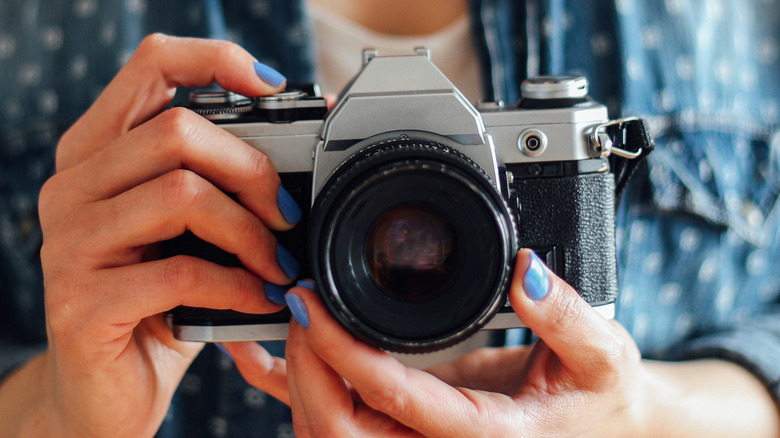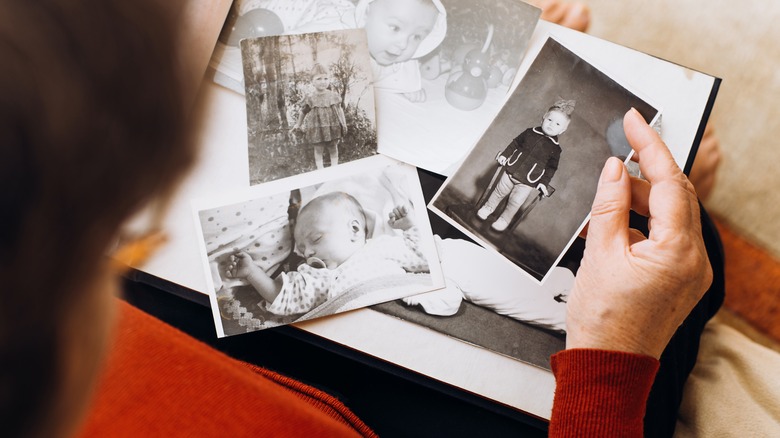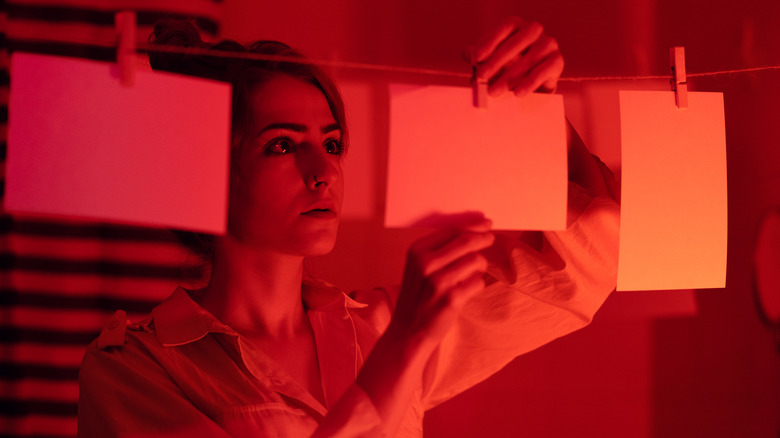The Reason Old Film Cameras Are Making A Big Comeback
Traditional film cameras haven't been a dominant format in the photography world for at least a couple of decades. When it comes to capturing an image in the highest possible fidelity, digital cameras are the obvious choice by a country mile, and as far as simply taking photos goes, just about everyone in the world has a high-resolution camera in their pockets thanks to smartphones.
In spite of these factors, however, the traditional film industry is still alive today, perhaps not exactly thriving to the same extent it once was, but still staking a definitive claim on the photographic world. It's a little surprising, as in most other technological fields, obsolete formats gradually phase out on their own as time passes them by. Older forms of recorded media, for instance, VHS tapes and vinyl records, are usually only owned for novelty or collection purposes. Why, then, are film cameras not only still around, but actually experiencing a return in popularity?
Authenticity
If you compare photos taken on a film camera with photos taken on a digital camera, the digital one will get you a higher resolution and fidelity almost always. After all, digital cameras have automatic adjustments, filters, shutters, and all that other stuff supplementing their photos from moment to moment. A film camera, meanwhile, has just your hands guiding it, and maybe a timer.
However, higher fidelity doesn't always make for a better photograph. It's more informative, sure, but there's something kind of magical about a film photo with natural imperfections. Warm grain, unusual lighting, slight blemishes – they're all flaws, technically, but the fact that they're all there helps to remind you that the photo was taken by a human being, not a fancy computerized eyeball.
Plus, using a film camera provides a healthy measurement of a shutterbug's true photographic talent. If you can still score that high-fidelity photo without any digital assistance whatsoever, then that's real talent that deserves to be recognized.
Preservation
One of the upsides to digital photography is that data can be stored much more easily than physical photographs. You can store hundreds, even thousands of photos on just your smartphone's internal storage, and as long as you still have your phone, they'll always be there. However, the concerning thing about digital photographs is that they aren't set in stone. They can be altered, doctored, or deleted without a trace.
A physical photograph may take up a little more space, but once it's been taken, it's set in stone. You can store it somewhere securely and hold it in your hands without worrying about someone compromising your system. Or, for sentimental purposes, you can frame it and hang it up somewhere. Granted, you can hang up a digital photo too, but that necessitates either a potentially-expensive digital frame or a whole trip to the convenience store to print glossies.
It's fun
If we're talking about the simple act of capturing an image, digital photography is undoubtedly the most convenient option. You point, you shoot, you have a photo. If that's all you care about, it's the better choice. Photography, though, isn't all about convenience. For many, it's a hobby and a passion, and the lengthy pursuit of the perfect photo is part of what makes the entire process fun and engaging.
For some photographers, there's a thrill in cordoning off a room in your home for a dark room, carefully and deliberately developing the film from their cameras. It's kind of like assembling a model train set or a jigsaw puzzle – you could purchase a fully functional toy train or a pretty painting, but there's no thrill in that. Model trains, jigsaw puzzles, and indeed, film photography are in-depth hobbies that allow many to really flex their fine motor skills.



